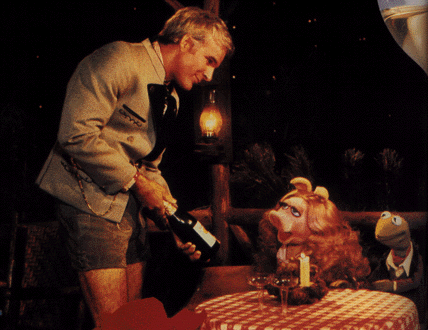Screwtops and Related Heresy
 As any pursuit with a history of thousands of years, wine is
steeped in lore and tradition. Those who come along and
introduce new technology to an ancient process often find
themselves on the receiving end of sharp criticisms. Innovators
can easily handle rational, valid, criticisms; these help to
perfect the innovation. What innovators cannot handle as easily
are the more frequently encountered criticisms that are
ultimately rooted in reticence to break from tradition.
As any pursuit with a history of thousands of years, wine is
steeped in lore and tradition. Those who come along and
introduce new technology to an ancient process often find
themselves on the receiving end of sharp criticisms. Innovators
can easily handle rational, valid, criticisms; these help to
perfect the innovation. What innovators cannot handle as easily
are the more frequently encountered criticisms that are
ultimately rooted in reticence to break from tradition.
One of the most visible areas of tradition can be seen in the ritual of opening the bottle. Wine has been stored in bottles for centuries, and serves an important purpose: keeping the wine from being exposed to oxygen or other influences that will act upon the wine and change its taste, color, or smell.
The ritual is at its best when in a restaurant or some other context where the person ordering the wine is distinct from the person serving the wine. The ritual goes something like this:
- A selection is made by the host, perhaps after some consultation with the server, particularly if the server is a knowledgeable sommelier.
- The server will return with the selected bottle, showing it to the host, allowing him to verify that it is in fact the desired varietal, vintage, vintner, and vineyard. (The “Vour Vees,” as it were.)
- In the presence of the host, the server will open the bottle.
- The server will then pour a small amount of the wine into the host's glass. The host will then go through some ritual of his own design involving examination of color, scent, and taste to ensure that the wine is good, and may be served to his guests.
- The server will then pour the wine into each of the guests' glasses, finishing with that of the host.
- Many servers finish the ritual by leaving a cloth serviette behind, often draped or tied ceremonially around the neck of the bottle. This collects any dribbles that might otherwise be inclined to make their way downward to stain the label.
There are actually reasons for various steps in this ritual, two of which I'll discuss briefly.
The first worthy of mention is the unsealing of the bottle in the presence of the host, which is especially important when the host is being charged for the bottle, as is the case in a restaurant. The purpose here is simple, to assure the party that after the host verifies that the bottle brought out is the bottle selected, no switching of the wine has taken place. Imagine someone ordering a $100 bottle of wine, verifying its correctness, and having the server disappear for a few moments, reappearing with the bottle opened. Have the contents of the bottle been replaced with a $50 bottle? Unsealing the selected bottle in the presence of the host prevents this question from arising. (I went once to a restaurant that screwed this up as a matter of policy. For the sake of my party, I didn't reject the wine or leave the place, as I was rather inclined to do, but I'm certainly not going to return.)
The second is the host's examination of the wine. The purpose here is to verify that the wine is not “corked,” or spoiled. This step is one necessitated by the technology of wine storage and service: glass bottles with cork stoppers.
Use of glass bottles for serving wine apparently goes back to the days of the Roman empire. Not only did the Romans perfect glassblowing, but certain Roman authors as far back as the second century BCE wrote of the need to seal glass containers (jars) with corks and pitch after fermentation. By medieval times, much of Europe lost access to its sources for cork (such as Iberia and Cadiz) and barrels were used for wine storage and serving, along with wooden stoppers, often wrapped in cloth.
In the seventeenth century, glass was more easily accessible (at least to the upper classes), and the use of glass bottles became prevalent. Those bottles originally used glass stoppers, ground specifically to fit individual bottles, much like we see in decanters today. Glass stoppers are expensive and cork was reintroduced. Cork stoppers were put into the bottle, but only about halfway, allowing for the cork to be extracted without too much difficulty.
With the introduction of the “bottlescrew,” now known as corkscrew, corks could be inserted fully into the neck of the bottle, as we commonly see today.

2,4,6-trichloroanisole:
Not your friend.
A critical requirement for a wine stopper is that the stopper be inert, that is, not to react with the wine. While cork usually serves this purpose well, there are cases where the seal is not especially good, allowing oxygen into the bottle, where it reacts with the wine, causing the bottle to be corked. The most common culprit for this spoilage is a chemical compound in the wine known as 2,4,6-trichloroanisole (TCA), pictured nearby. Although harmless, the compound can give the wine an unpleasant smell or taste. (In fact, the cork isn't always responsible, but it's generally held to be the most likely cause and is in any case the scapegoat.)
Developments in wine stopper technology have led to three major types of modern stoppers. Some of the resistance that these have received has been to do with the threat that they present to the ritual of wine service.
The “crown cap” is the small metal cap used on beer and soda bottles. As a stopper, it is extremely cheap and efficient. Further, it has also been shown to be the most reliable stopper for long-term storage. Unfortunately, it suffers from guilt by association, in that they are not generally to be found except on the lowest-quality wines and—what is probably worse—cheap alcoholic beverages like wine coolers. Who ever heard of a real wine with a crown cap? Only people who have actually looked into the matter and even then, they are hard-pressed to find bottles that come that way. In tech-marketing-speak, only innovators have dared tread into this territory. And then there's the matter of how it actually gets served; the ritual of wine service is almost completely destroyed.
The next is seen somewhat more commonly, the screwcap. It is an inexpensive closure for short and medium term storage. When the wine is sealed, the (unthreaded) cap is placed on the top of the bottle and pressure is applied from the outside, causing the cap to form a seal around the lip of the bottle. These are typically some alloy of aluminum, internally lined with a molded cork, covered with an inert film that actually will come in contact with the wine. These have had some success in bottle aging certain white wines (in excess of ten years), but for many, are considered unproven for long-term storage. Again, the wine service ritual is dramatically altered.
The final option is the synthetic “cork,” usually made from plastic. These address the problems with allowing for wine to react with the cork, but do not significantly alter the ritual of opening and serving a bottle. While the step of pouring a small amount for the host to examine becomes technically unnecessary as a means to ensure that the wine has not reacted with the cork, it can be easily preserved either as a mechanism for the host to taste the selection to be sure that he likes the wine—after all, it might be one he has never tried—before serving it. Thus, the technical issues are solved, while preserving the aesthetics of the wine service experience. Synthetic corks do have their downsides, largely by being difficult to extract (sometimes significantly so), and are not well-proven for their ability to support bottle aging in the long-term.
I have for years been buying wines with synthetic corks and find them wholly unobjectionable. Venturing further into high-tech wine, Niki recently bought two bottles of screw-top wines. One was a “Screw Kappa Napa,” produced by Three Loose Screws Wine Company of Sonoma, California. The name of the wine and producer were both comical enough to warrant some investigation, but sadly, their Web site requires the Flash player, which is complete and utter nonsense, so I have nothing useful to report about them. The other was a bottle produced by R.H. Phillips.
The wines themselves were perfectly drinkable, well-preserved by the screwcaps. The problem is that there just isn't much romance in giving the top of the bottle a good crank. My impression is that if you are after wine for the sake of the wine's taste, color, and smell, without regard to rituals of service, you'll find screwcaps and crown caps perfectly sensible. For me, though, drinking wine is all about an experience. Although wine quality is important, so are many other factors, including the ceremony that precedes actually drinking the wine. Anticipation has a chance to build, and for a few precious moments, everything can slow down just long enough to put the diners into the proper mindset to experience what's happening around them instead of rushing through it all on their way to something else. Thus, until someone figures out a romantic ritual that works for screwcaps, I'm keeping my corkscrew at the ready.


The waiter showed me the bottle and I did manage to see that it was what I ordered. However, the rest of the RITUAL was quite lost on me. He handed me the cork but I assumed he wanted me to dispose of it so I threw it at Lynn. I know now that I was supposed to smell it to see if the bottle was “corked”.
He then poured me a small amount intending for me to swirl it around to check the color and oxygenate it before sampling it for my guests. Alas, I simply chugged it and asked for seconds while muttering about the need for man-sized servings. Your article now equips me to better understand the nuances of wining while dining. Thank you!